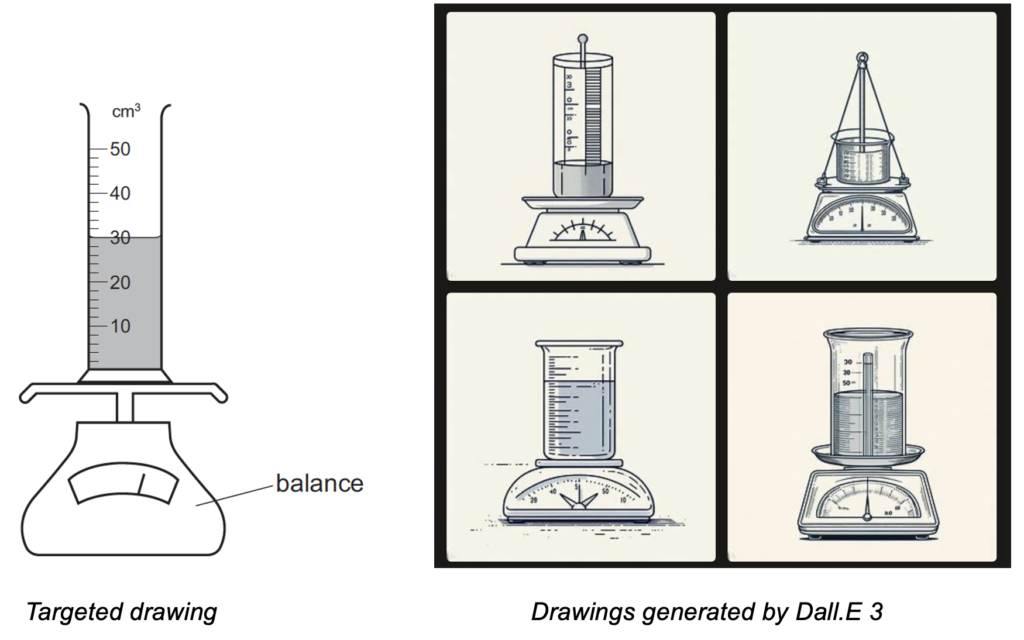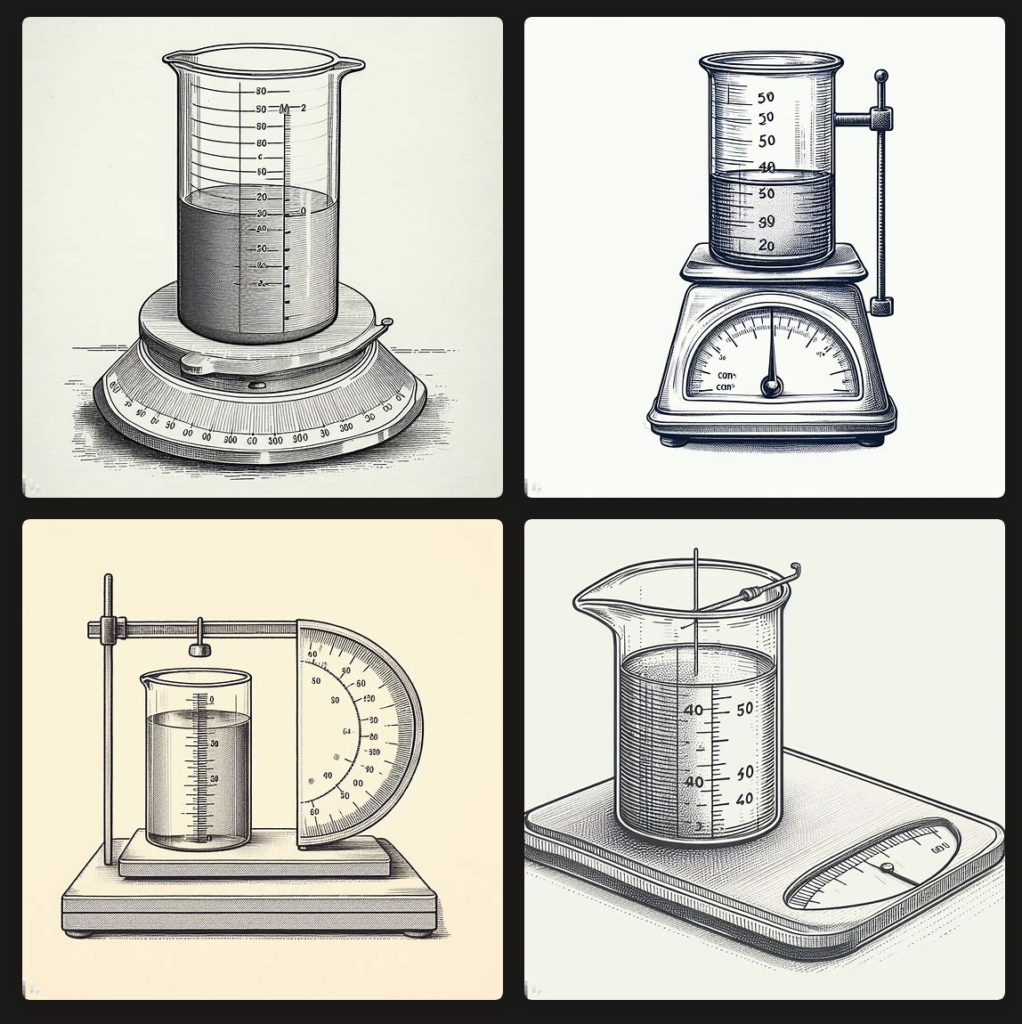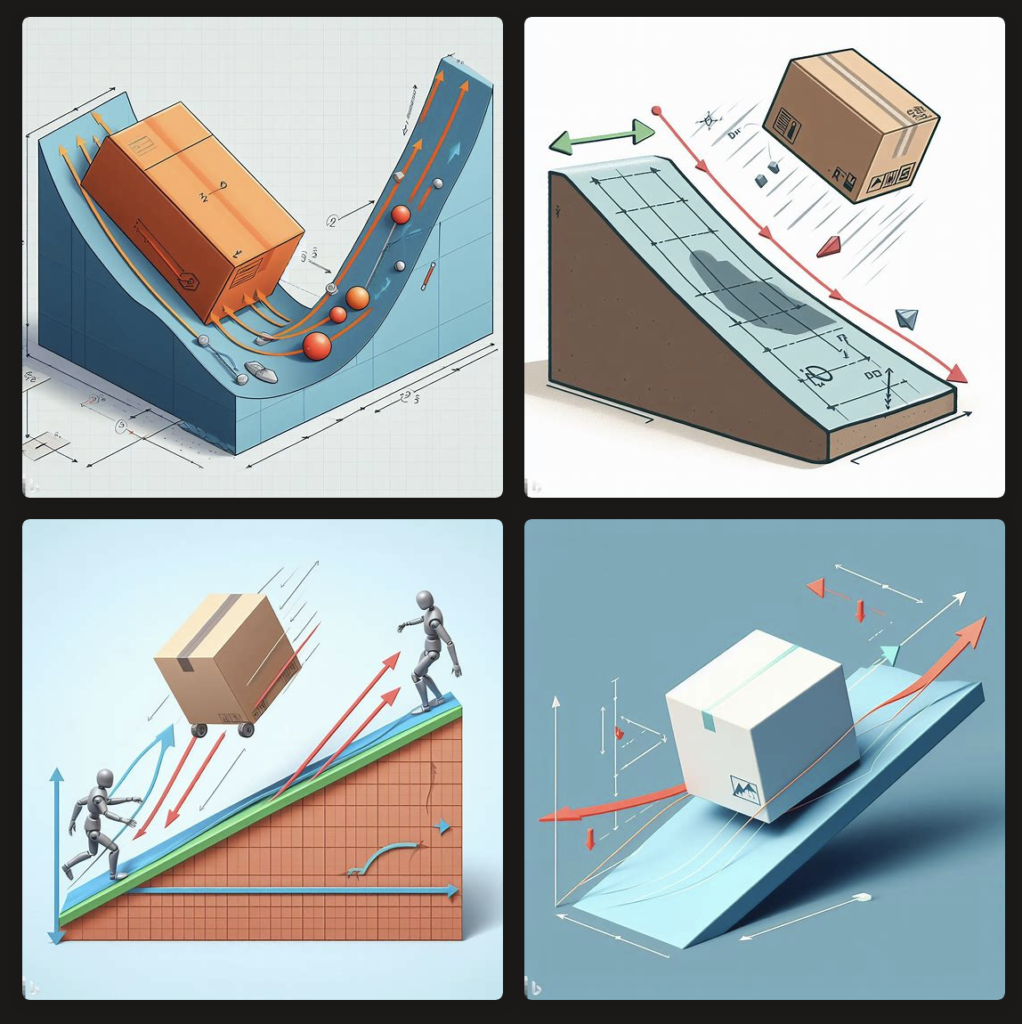I was wondering if we could use generative AI to simplify the diagram drawing process while setting exam questions. Then I came across Microsoft’s Bing Image Creator, which is powered by Dall.E 3, which is in turn, built on ChatGPT. After signing up for an account, I was given 100 free credits to test it out.

I used the diagram on the left as a target and the diagram on the right was generated using the following prompt:
A minimalist line drawn diagram with clean lines of about 1 mm thick, in the style of the exam papers. Show a measuring cylinder with markings up to 50 cm^3 containing 30 cm^3 of a liquid that is grey in colour. The measuring cylinder is on a weighing balance with a curved display for the analogue scale. A needle points slightly to the right within that scale.
This was a decent output. I could give the diagrams on the top left or bottom left boxes a little touchup and they will be good for use in a test paper.
In fact, the attempt above was the second one. The first attempt got me this set of pictures, which were more 3-dimensional and had more unwanted components such as retort stands and a protractor.

The prompt used was this:
A line drawn diagram with lines of about 1 mm thick, in the style of the Cambridge Physics exam papers. Show a measuring cylinder with markings up to 50 cm^3 containing 30 cm^3 of a liquid that is grey in colour. The measuring cylinder is on a weighing balance with a curved display for the analogue scale. A needle points slightly to the right within that scale.
While I could further refine the diagram to make it as close to the desired picture as possible, I did not want to waste anymore free credits. I feel that, with a monthly subscription fee of USD20, it will be worth it only if I use Dall.E on a daily basis, which is unlikely. However, for content creators such as textbook writers or curriculum resource developers, this might be of use.
Crafting the right prompts for the image creator takes skill. Being specific is key to obtaining the image that you have in mind. I first tested it out using a prompt that was too brief:
free body diagram with real life object and physical 3D vector arrows showing a box sliding down a rough slope
This was the disastrous outcome:

Do let me know if you are also trying ways to use AI to make the exam-setting process more efficient and share your tips!